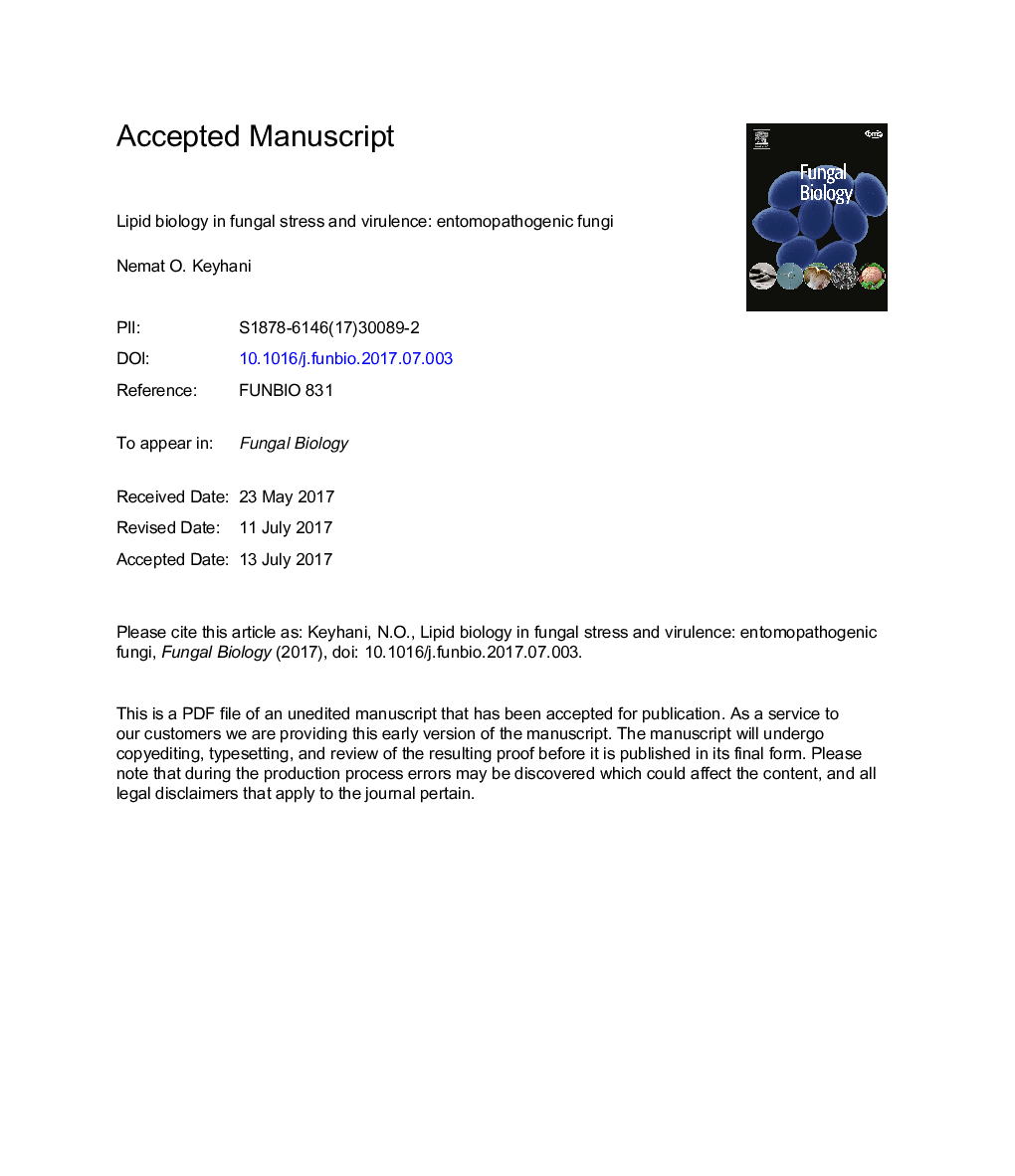| کد مقاله | کد نشریه | سال انتشار | مقاله انگلیسی | نسخه تمام متن |
|---|---|---|---|---|
| 8842736 | 1615831 | 2018 | 30 صفحه PDF | دانلود رایگان |
عنوان انگلیسی مقاله ISI
Lipid biology in fungal stress and virulence: Entomopathogenic fungi
دانلود مقاله + سفارش ترجمه
دانلود مقاله ISI انگلیسی
رایگان برای ایرانیان
کلمات کلیدی
موضوعات مرتبط
علوم زیستی و بیوفناوری
علوم کشاورزی و بیولوژیک
علوم کشاورزی و بیولوژیک (عمومی)
پیش نمایش صفحه اول مقاله

چکیده انگلیسی
Broad host range insect pathogenic fungi penetrate through the host cuticle, necessitating an ability to confront and overcome surface lipids and other molecules that often include antimicrobial compounds. In this context, induction of lipid assimilatory pathways by exogenous substrates is crucial for successful infection to occur, and lipid growth substrates can have significant effects on the virulence of fungal infectious propagules, e.g. conidia. The production of lipases is a critical part of the cuticle-degrading repertoire and pathways involved in triglyceride metabolism and phospholipid homeostasis have been shown to contribute to host invasion. Mobilization of endogenous lipid stores via the activities of the caleosin and perilipin lipid storage-turnover proteins, have been linked to diverse processes including formation of penetration structures, e.g. germ tubes and appressoria, spore properties and dispersal, and the ability to respond to lipid growth substrates and virulence. Here, we summarize recent advances in our understanding of lipid assimilation and mobilization pathways in the ability of entomogenous fungi to infect and use host substrates. Host surface and internal lipids can alternatively act as antifungal barriers, inducers of pathogenesis-related pathways, and/or as fungal growth substrates. Lipids and lipid assimilation can be considered as forming a co-evolutionary web between the insect host and entomogenous fungi.
ناشر
Database: Elsevier - ScienceDirect (ساینس دایرکت)
Journal: Fungal Biology - Volume 122, Issue 6, June 2018, Pages 420-429
Journal: Fungal Biology - Volume 122, Issue 6, June 2018, Pages 420-429
نویسندگان
Nemat O. Keyhani,